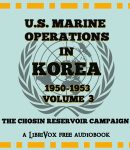
U.S. Marine Operations in Korea, 1950-1953, Volume 2: The Inchon-Seoul Operation
The Inchon Landing was a major amphibious operation, planned in record time and executed with skill and precision. Even more, it was an exemplification of the fruits of a bold strategy executed by a competent force. The decision to attack at Inchon involved weakening the line against enemy strength in the Pusan Perimeter in order to strike him in the rear. It involved the conduct of an amphibious attack under most difficult conditions of weather and geography. It ultimately culminated with combat in the heart of Seoul. – Summary by Lemuel C. Shepherd, Jr. and Aaron Bennett [chương_files]
